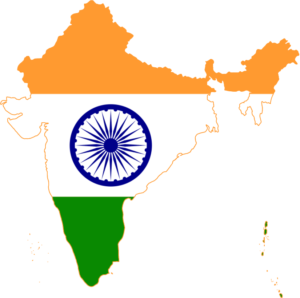Demography and Political Representation

Political representation under neoliberalism has been remade into an instrument whose primary function is to uproot demography from the local economic base and to fold populations into global consumerist circuits under the rubric of a new “global citizenship” a citizenship measured and rewarded by one’s capacity to consume rather than to sustain collective life. Where representation once claimed to translate social needs into public policy, today it more often manufactures consent for market imperatives: electoral politics becomes the packaging and sale of choices that are pre-formatted to serve capital. This rewriting of representation is not incidental; it is structural. The state and its political intermediaries no longer principally mediate between popular forces and policy outcomes. They act as contractors for transnational capital, brokers who trade the symbolic legitimacy of elections for policies that secure capital accumulation and expand consumer markets. Demography is central to this transformation.
Large youth cohorts, rural populations, or deep reserves of informal labor represent potential political agency because they are sources of knowledge, community autonomy, and alternative economic practices. But neoliberal representation treats these demographic facts as resources to be managed, to be converted into labor, urban consumers, or data points not as political subjects with rights to shape development on their own terms. The political representative’s role becomes twofold: to facilitate the social conditions in which people can be turned into predictable market subjects (through education reforms, labor flexibilization, urban zoning, and migration incentives) and to neutralize local forms of economic life that compete with capital, subsistence farming, communal resource governance, and artisanal production.
This is visible in concrete patterns. Pakistan, for example, contains a pronounced youth bulge and rapid urbanization that could have been harnessed for locally rooted development, but its political economy is oriented toward stabilization for external finance and market access; local economies have been hollowed out and poverty reduction gains have proven fragile in the face of shocks. Pakistan’s Freedom in the World profile also signals a polity in which formal democratic procedures exist but substantive public freedoms and civic space are constrained. These conditions make it easier for political elites to present neoliberal reform as inevitable while insulating core policy from popular intervention.
Comparative examples sharpen the pattern. In India and Brazil—two large democracies with divergent political cultures—the form of representation diverges but the neoliberal logic persists: elites channel democratic legitimacy into policies favorable to capital while sidelining indigenous land rights or community economic autonomy. India’s Freedom House designation (Partly Free) underscores a system where electoral competition can coexist with systematic curtailment of dissent and minority claims, conditions that enable market-friendly policies to proceed without meaningful challenge from affected demographics. Brazil’s polity, while rated more favorably by some indices, has seen indigenous and peasant resistances repeatedly marginalized as extractive projects expand. In Nigeria, where electoral competition is intense but state capacity and public goods provision are uneven, representation often serves local political machines or rent-seeking coalitions tied to oil and finance rather than community development. The result: demography particularly young urban and rural poor populations becomes a managed constituency, visible in voting rolls but invisible in policy formation.
At the opposite pole, China’s model demonstrates that neoliberal market integration can be enforced by a state that both enables capital accumulation and suppresses political voice. Whether through urbanization policies that absorb rural populations into precarious urban labor or through development projects that dispossess minorities, the effect is similar: local demographic potential is subordinated to projects of large-scale capital accumulation and export-led growth, with limited channels for democratic contestation. China’s Freedom in the World score captures how formal political voice is heavily constrained even as markets expand.
Even in the formally “free” advanced capitalist core, representation is similarly colonized by market logic. The United States, with high nominal scores on liberal indices, exemplifies how institutions of representation are captured by money, media, and corporate lobbying so that policy choices marginalize deindustrialized regions and racialized populations even as they are counted in the census and polls. Electoral victory here often signals the ability of a candidate to mobilize capital-friendly coalitions rather than to deliver structural transformation for dispossessed demographics.
Why do indices and datasets matter here? Because the technologies that quantify democracy and governance, Freedom House scores, governance indices, “ease of doing business” metrics, GDP and consumption per capita are not neutral. They help define what counts as legitimate policy. They privilege indicators that map onto neoliberal agendas (market openness, property rights, regulatory efficiency) while undercounting or ignoring less commodifiable forms of life and local knowledge.
The instrumentalization of measurement makes it easier to argue that a polity is “improving” even as inequality deepens and local economic bases are eroded. Scholars have critiqued these indices for form-over-substance valuations that obscure structural power and class dynamics.
Consumption metrics flesh out the story of how demography is converted into market value. Nations that rapidly expand household consumption become attractive targets for capital; thus political representation is retooled to expand consumer markets, often at the cost of social provisioning that would support locally sustained livelihoods. China’s recent policy emphasis on boosting domestic consumption reflects that logic: the state seeks to pivot demographic energy into consumption, not to cede democratic authority to local communities whose economies might resist commodification. Viewed through a Marxian frame, this is not merely an ideological shift but a reorganizing of the base–superstructure relation. The neoliberal mode of accumulation alters property relations, labor markets, and the spatial organization of production; in response, the political superstructure (parties, legislatures, courts, media) reproduces the ideological scaffolding required for that mode to persist.
Gramscian consent is manufactured—through schools that produce “human capital,” NGOs that repurpose dissent into projectized rights work, media that naturalizes market choices—so that electorates internalize the consumerist identity and political representatives emerge as coaches of market behavior rather than caretakers of communal life.
Yet contradictions persist. Demographically large groups like youth in Pakistan and across the Global South, marginalized racial and ethnic communities in the Northremain reservoirs of potential contestation. Neoliberal representation absorbs some of that potential through cooptation (token representation, reserved seats, targeted welfare projects) while repressing or neutralizing the rest. The terrain of struggle is therefore twofold: it is an economic fight over control of land, labor, and local productive systems and a cultural/ideological fight over who counts as a political subject and what “citizenship” means. If representation is to be reclaimed for democracy in the substantive sense, it must be reimagined as a politics that recognizes demography as a source of knowledge, rights, and collective power, one that protects indigenous economic forms, communal governance, and local ecologies from being simply converted into markets. This requires both a reconfiguration of measurement, indicators that capture distributional justice, community autonomy, and sustainable livelihoods and a politics that rebuilds institutional channels for genuine popular deliberation beyond the ritual of voting. Until then, representation will remain a neoliberal project: a political technology that uproots demography from its local economic base to feed global consumerism and to legitimize a new nomenclature of citizenship defined primarily by consumption.


